Episode 13: Garrett Batty
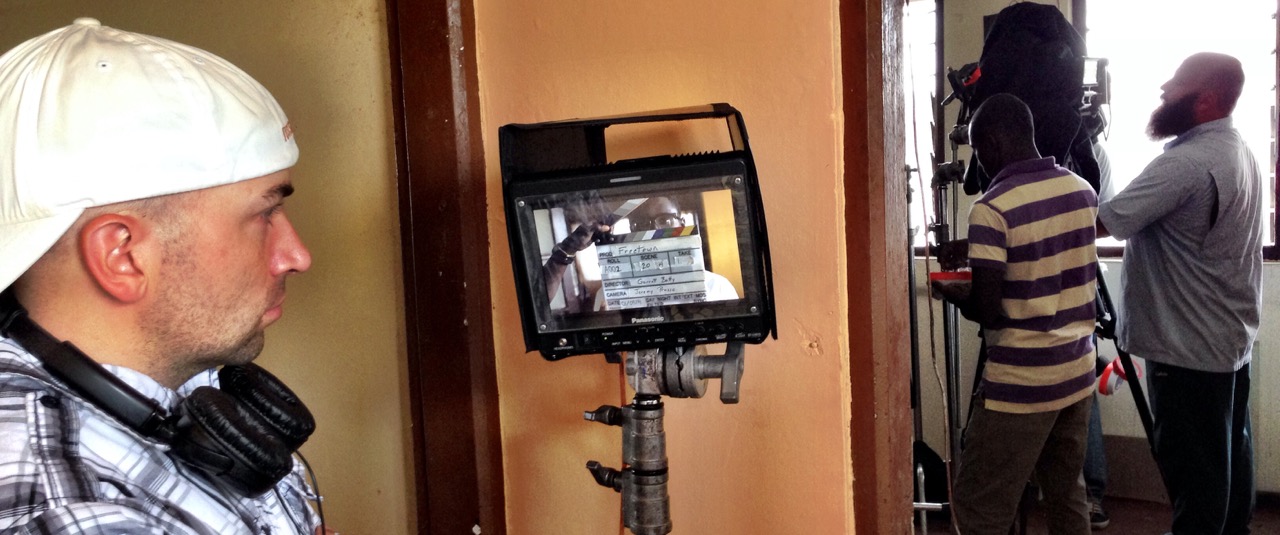
Show Notes
In this episode, Mormon Artist podcast host Katherine Morris interviews film writer and director Garrett Batty. Garrett takes us behind the scenes on Freetown (33:00) and also discusses The Saratov Approach and his thoughts on Mormon cinema.
- Interview date: March 27, 2015
- Freetown website
- Note: Podcast music and sound by Saint Roxcy. Copyright © Saint Roxcy 2015. All rights reserved.
Transcript
Katherine Morris: Welcome to the Mormon Artist podcast. I’m your host, Katherine Morris. Today we have joining us Garrett Batty. Hi, Garrett.
Garrett Batty: Hey, Katherine.
Katherine: Garrett Batty is a film writer and director best known for The Saratov Approach and the upcoming Freetown.
Garrett, you’re in the middle of putting Freetown out there in the theaters. When is it going to be released?
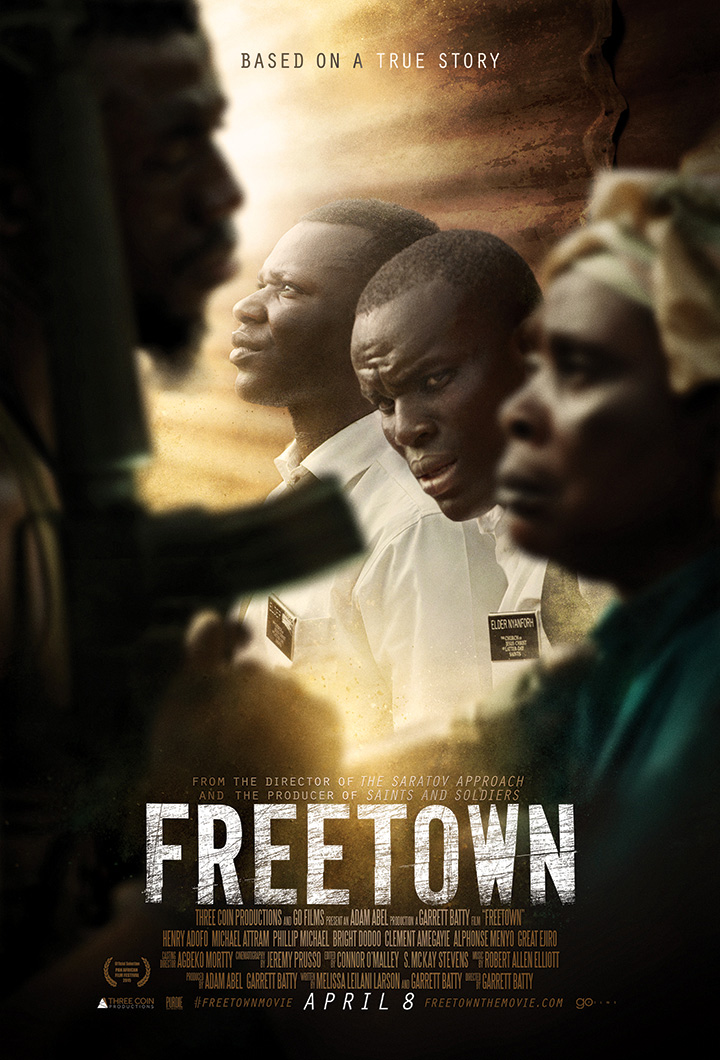
Garrett: We release nation-wide on over 100 screens Wednesday, April 8th.
Katherine: What states are those going to be in?
Garrett: It’s in a couple dozen states, and all of the theaters are listed on our website at freetownthemovie.com. We’re updating those daily. Just this morning we got a call, “We’re going to book three more up in Idaho.” So, it’s an exciting time.
Katherine: Okay, great. And that’s something that if there’s enough interest generated somewhere, someone can request it through your website. Is that correct?
Garrett: Yes. They can go to the website or email us—or even on Facebook, they post where they would like us to bring the film. It’s difficult because it’s expensive to open a film in a theater, so unfortunately we’re not able to accommodate everybody who wants to see it in their local theater.
But people have been successful in saying, “We’ve got a group of 200 people that are ready to go if you’ll book a screening.” So, we’ve been able to do that.
Katherine: That’s exciting! We’ll talk more about Freetown later, but are you excited?
Garrett: Yeah, it is. We’re in the middle of it, so—excited and nervous and just ready to get this out to the audience.
Katherine: Yeah, that’s great. And you guys have a lot of social media updates and everything, so anyone who’s interested in finding out more about Freetown, it’s not difficult—through your Twitter account and Facebook and website.
Okay, well, I’d like to hear a little bit of your story as a filmmaker. How did you get involved in making films? That’s probably a long story.
Garrett: Sure, yeah. I’ll try to keep it brief. As far back as I can remember, I always wanted to make film or be involved in film. Even in middle school or high school with my friends I’d make little movies, and I just knew it’s what I wanted to do. So, after my mission, I went to school at BYU. I went through their film program, and then immediately after graduating with a degree in film with an emphasis in directing, my wife and I moved out to Hollywood and started work out there in Los Angeles.
Katherine: What were you doing there?
Garrett: My skill set was editing, so that’s what I was paid to do. I did some trailers and TV spots and some pilots—did everything I could to provide for my family as an editor. And then when I wasn’t working, I was starting my own production company, doing shorts. I ended up doing a lot of DVD design and authoring.
A lot of my clients came from this early LDS film movement, and I started designing DVDs for Halestorm Entertainment and Excel Entertainment and got involved that way.
Katherine: Okay, so you were involved, then, in the independent Mormon film community fairly early on.
Garrett: Yeah, I think so. I mean, I sat in the edit bay behind Wynn Hougaard as he cut The Singles Ward and watched him and observed that. I was fascinated by this movement—LDS films being made for a national audience with a distinct LDS voice. That was interesting to me.
Katherine: So, you were in Hollywood and then what?
Garrett: And then one day my wife says, “We need to move back to Utah.” It was unexpected because we both loved being out there. We loved the people and the work that we were doing, but she felt strongly, and after a short amount of time I felt strongly. I mean, I agreed with her that we’d move back to Utah, sort of unexpectedly and not really knowing why.
Fortunately, much of my work was coming from Utah, so I was able to continue doing editing and DVD authoring when we moved back.
But it was apparent that we moved back for family reasons. We ended up adopting three children somewhat unexpectedly in a short amount of time. It was certainly one of those moments when you recognize there’s some sort of higher power directing your life.
So, that answer somewhat immediately came as to why we were to move back. But in that process, then I started working for the Church, producing Mormon Messages and other content for them.
Katherine: How did you go from that to feature-length film?
Garrett: Prior to working for the Church, my first feature that I wrote and directed was a family comedy called Scout Camp. It was my first attempt that this niche market—finding an audience and going from content to completion to distribution. It was a learning experience to say the least. Fortunately, Scout Camp found its audience, and we were able to pay back all of our investors and have that experience of producing and releasing a feature film.
Then, after working several years for the Church and learning the importance of message and story—to answer your question of how I transitioned—there was this moment of working there that I thought, “I would like to do feature films. At this point it’s not an option to do feature films within the Church. The Church was not interested in using employees to produce feature films.
So, I took a leave of absence from my job. I wrote the script on the train as I commuted each day, and then I took two months off to shoot the film—and then continued working full-time for Mormon Messages and editing full-time at night on Saratov Approach.
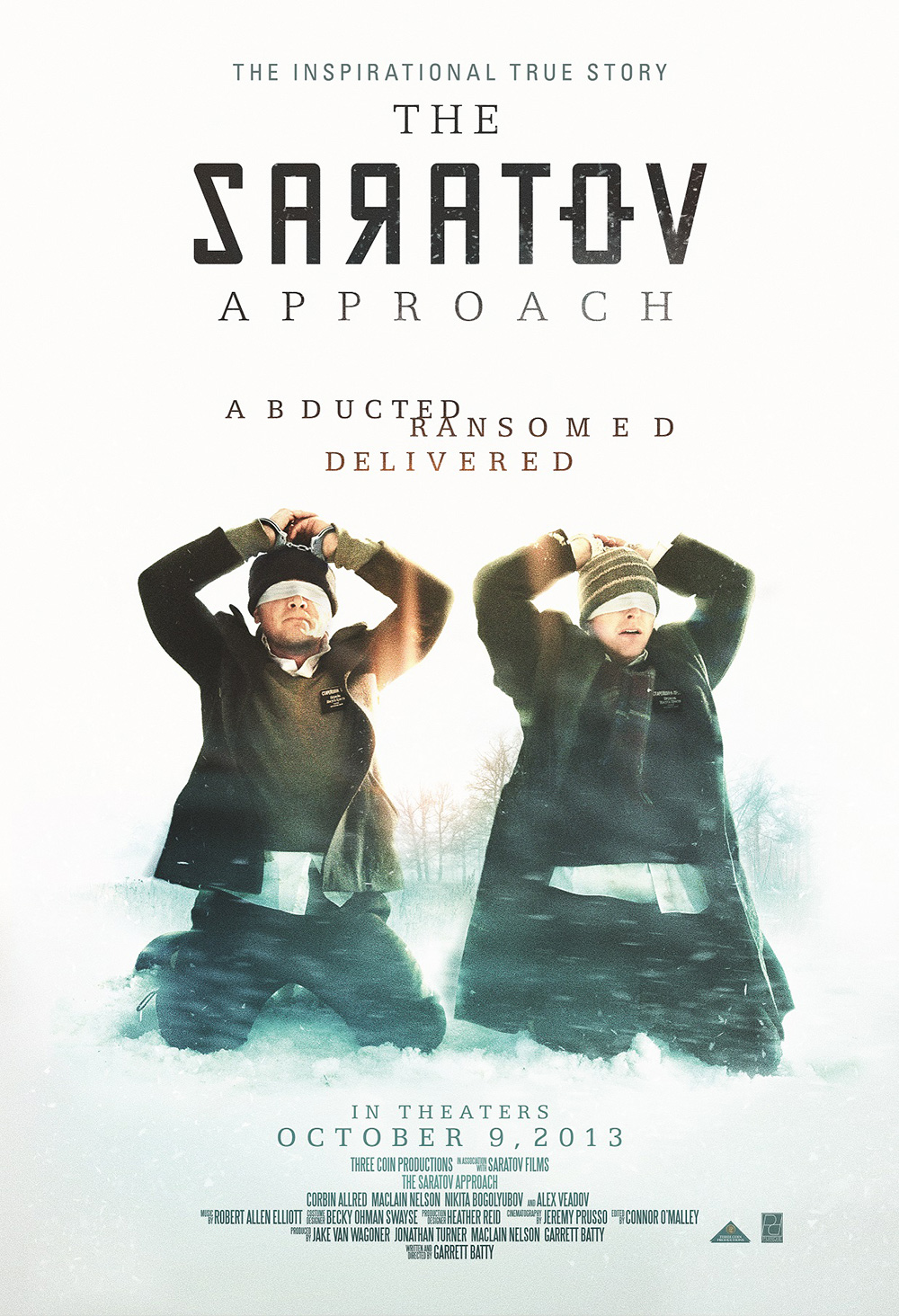
Katherine: That sounds like a busy schedule.
Garrett: It was busy, but at the time—you never know how people are going to react to your film. Is it going to be accepted and even profitable? So, I felt I had to keep all safety nets around me in case people didn’t respond to the film.
Katherine: I’m interested in how you pick your stories. And also why make films for the Mormon market? Because not everyone chooses to. Some people do. Why did you decide you wanted to do that?
Garrett: To answer both parts of your question on how I pick my stories: I don’t have a specific process. The story behind Saratov Approach is that I was a film student when that incident occurred. It left an impact on me because of the national interest of the story, not because it was a uniquely Mormon story—but because there was national coverage. When I decided I wanted to do it, I felt like it would again speak to a national audience.
I’m trying to remember what the second part of your question was.
Katherine: Well, I said why make films for a Mormon market, but that’s a little bit different. I guess what I was asking was why make Mormon films and why make films for the Mormon market. But those aren’t necessarily exactly the same question.
Garrett: Yes, exactly. I’m glad you point that out because I think that often we ruin ourselves when we say, “I make movies for the Mormon market.”
One of the most eye-opening things about making Mormon Messages is that, ironically, they were not targeted for Mormons—for members of the Church. That was kind of our mantra—that anything uniquely exclusive to Mormons we weren’t going to feature or highlight.
Certainly somebody could look at that and say, “They’re called Mormon messages. How can you not do that?” I think, again, it was our focus at the time to use a voice or use techniques that were universally acceptable—and use quality that was above what might typically be seen in a three-minute YouTube video. And to make that accessible to as broad an audience as possible.
That idea was very compelling to me. So, as a filmmaker, while certainly I’ll insert my Mormon voice into my work, I don’t ever hope or aspire to just make a film for a Mormon audience. I think that that limits what we’re doing.
Katherine: But with your last two films, you have chosen Mormon characters. You’ve addressed the market—you’re not specifically addressing a Mormon market. But why pick Mormon characters? Why tell those stories?
Garrett: That’s also a great question, and there are two sides to that answer. One, as shallow as it may seem, it’s strictly a business decision.
For Saratov, I had very little money. I could not afford a star to be in the movie. There are genre filmmakers who say, “Okay, we don’t have a star. We’re an independent film company. We’re going to make a film about orcs. Orcs are a generic star, and everybody knows what an orc is, and we have an audience.”
Well, you’ve got The Book of Mormon musical on Broadway that has made the Mormon elder missionary a familiar star to people. So, from a business standpoint, you say, “I can’t afford an A-list Hollywood actor. Who can my star be that’s a recognizable person of interest? Well, the Mormon missionaries are.”
Now, certainly that doesn’t guarantee box office success. There are plenty of films out there that are made about Mormon missionaries that might have the same tone as The Book of Mormon musical rather than Saratov Approach.
The second way of answering that question is I want to make films about what I know about. With my background being raised a member of the Church, and my testimony being what it is—that’s what I want to put in my films.
Does that answer your question?
Katherine: Yeah, it does. Absolutely. That was interesting that you mentioned The Book of Mormon musical, because I didn’t realize that was intentional.
One of the things I think is interesting is how Mormon art influences Mormons. Any kind of Mormon art—so, Mormon art made by Mormons, but then also Mormon art made about Mormons.
That’s really neat to me that The Book of Mormon musical was one of the things that influenced you. Because you’re right: The Book of Mormon musical has generated quite a bit of interest in Mormon stories, and probably particularly the story of Mormon missionaries, since it was on Broadway.
Garrett: Yes. Well, certainly. I served my mission in New York City, and so there was certainly a draw to say, “Okay, so here in the heart of my town, they’re telling a Mormon story with a distinct voice that is not my voice.” It definitely drove me to say, “There are lots of Mormon stories and lots of missionary experiences that deserve to be told.” It definitely strengthened my desire to say, “I’m going to leave my job for a few months and do this film.”
Katherine: And tell a missionary story with a Mormon voice —a Mormon missionary story with a Mormon voice.
Garrett: Yeah.
Katherine: That’s neat. My other question related to that was—I’ve been thinking recently about this idea of telling stories in a universal way.
I’ve attended the LDS Film Festival kind of off and on for the last five or six years. You get a lot of different styles of films. The ones I think are particularly interesting are the ones that tell Mormon stories—because that’s what we’re experts at, and that’s what makes our stories unique. We can tell stories from our culture and our beliefs.
You kind of have a range of approaches for that. Some of the films, I think because they’re trying to appeal to a national market or a national Christian market in addition to the Mormon market, sometimes they will film alternate scenes, where instead of a bishop there’s a pastor. Or they’ll take out a term that someone who’s Mormon would use and put in a different term.
I don’t know what you would call it, exactly, but there’s some of that going on. Usually the idea is that—someone might say that makes the story more universal, if you take out the specifically unique Mormon elements and replace it with something that’s from another religious culture or more recognizable.
You’ve said that you want to tell stories not specifically to the Mormon market but to a national market, but you don’t really do that. You had Mormon missionaries, and it was all Mormon missionary from beginning to end. So, what’s your approach to that?
Garrett: That’s a great question. I think that, specifically for Saratov Approach, why it reached a broad audience is because I paid very, very close attention to the script to not make anything in it exclusive to Mormons. I mean, certainly we’re using a name brand religion with Mormon missionaries.
I think the question became, “Does the faith of these characters—is it important that it’s a Mormon faith for our characters in this situation that they’re in?” The answer to that is “Yes. In this situation it is.” However, that is not the complete character. The character is not flat and all he ever talks about is spewing Mormon faith and missionary discussions.
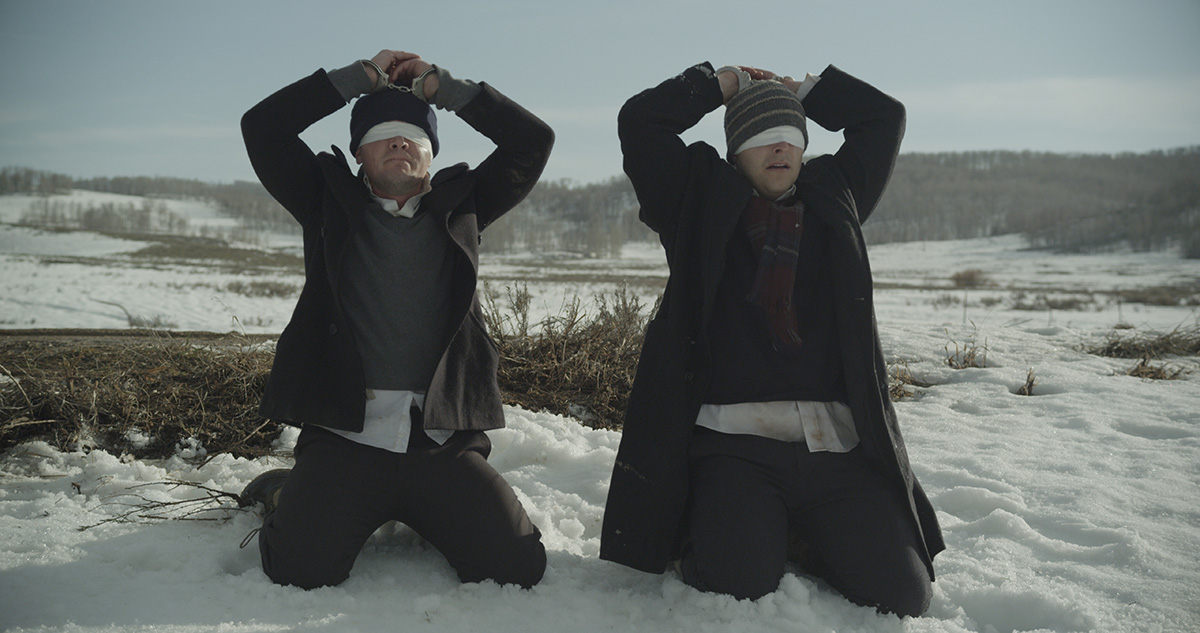
They need to be real people. I think, using a missionary nametag does not immediately make you exclude the audience. I mean, look at The Book of Mormon musical. Most of that audience is most likely not members of the Church. So, there are ways to do that, and I think the story needs to be accessible. What drives the characters and emotions is not exclusive to Mormons; it is because of their faith.
As far as your comment about other films sort of sanitizing themselves or using a generic version of religion, I think that that’s again probably a business decision.
Katherine: Yeah, I’m sure it is.
Garrett: We know there’s definitely a market and an audience for those types of films—for faith-based, faith-affirming films. Right now we’re in a time where using a Mormon character in a movie is detrimental to some of that audience.
I don’t necessarily think that I’m pursuing the faith-based audience, even. I like to try to pursue the film core—the cinematic audience. If Hunger Games is number one movie in the country, that’s the audience I want to talk to. Those people that are attending that movie. I don’t want to leave anybody out.
Katherine: Yeah, that makes sense. So, what you’re saying is someone who’s making a film for the Mormon market might make a film a certain way. Someone who’s making a film for the general Christian market may make some choices based on what that market responds to. And then someone making their film for a general national market may make other choices based on what that market responds to.
Garrett: Yes, I agree. And you say it better than I said it. You can take the movie Castaway and you’ve got Tom Hanks, who works for a shipping company. In the film that shipping company is FedEx. Does that mean we’re going to be watching a film about FedEx? No.
Tom Hanks certainly had a character that was bigger than just his job at FedEx, and so an audience was able to relate to that story and see that story. And to the credit of the film, they didn’t make a generic shipping company. They made it as authentic and believable as possible and went with that. So, I think that’s what I’m trying to do.
Katherine: Yeah, that’s a good analogy. And he’s not necessarily feeling FedEx feelings or saying FedEx things. He’s a FedEx employee who’s feeling human emotions and having human experiences.
Garrett: Certainly, certainly. And not to take it too far—I mean, it certainly influenced him, though. Because he was conscientious of time and his watch and focused on these characteristics that built that character that resulted from his affiliation from FedEx.
I think a Mormon missionary is going to be the same thing—when he fears, he’s going to refer back to his testimony and rely on that. But, certainly, it’s not going to disable him to have a regular conversation with people not of his faith.
Katherine: One of the things I really liked about Saratov Approach was that I think it did strike that balance quite well. Because, I think the characters are very relatable. I think anyone could imagine, being in that same situation, that they would go through those same kinds of emotions that those missionaries would go through.
But one of the things I liked about it is that they were influenced by their Mormon beliefs. It was a uniquely Mormon film, meaning you couldn’t have told those stories if those characters hadn’t been Mormon missionaries. The whole time they were negotiating this very justified feeling of needing to escape, even if that caused their captors harm—and also the feeling that they’re in Russia as disciples of Jesus Christ who are called to minister to the people of Russia, which includes their captors.
So, I think in that regard, it was different from maybe what another hostage film would be like—I don’t think you would have quite the same kind of dynamic going on.
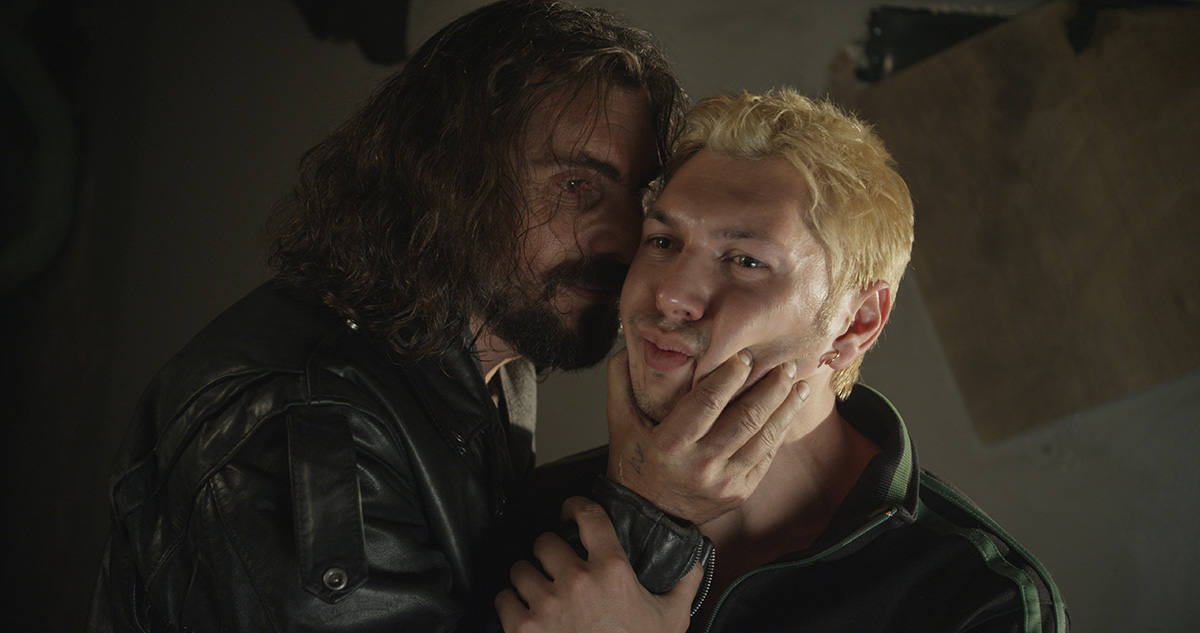
Garrett: Certainly, yeah. I think in that situation there’s quite a bit of irony there—that, if it’s two Americans that are captured, okay. Let’s try to figure out a way to get out. And what if it’s two Americans who are there to preach peace and a message of love and forgiveness? Now what? How does that increase the stakes?
Katherine: Yeah, that was a really beautiful film. So, going along with this idea of making films, marketing films—how did that film do? I know it did well in its theater release. I know it did well in the Mormon market. How did it do just in general?
Garrett: It did very well. It surprised us. It certainly surprised me and those who were involved with it. We initially opened the film in October, right after General Conference. We opened it on 20 screens in Utah.
After the first weekend—the first one or two weekends—Hollywood Trades wrote a report on us, saying, “What is this little film that has a huge following in Utah?” They noticed it because the per screen average was higher than Gravity and Captain Phillips. So, certainly people were responding to the story, and Hollywood wanted to know why.
What that article then enabled us to do was to stage a second release—or to broaden our release where in January we ended up playing on over a 150 screens across the county. I had the opportunity to travel around and attend many of these screenings in different parts of the country, and it was not just LDS people attending these screenings.
It was very well received, which ended up enabling us to put the film on Netflix, where it’s done very well, and other areas: iTunes, Google, Amazon. We’ve been pleased with the film.
Katherine: That’s fantastic. So, when you were talking to some of these people who weren’t LDS, what kind of comments were you getting—what reaction?
Garrett: The same reaction that people who are LDS were giving. Where it was just a regular moviegoer that wants to be entertained and wants to hear a good story. They would come out of the theater and say, “Thank you. That was very powerful. It was a powerful film.”
We did a big screening in Hollywood, and we had Larry King, whose wife is a member of the Church. He was there at our screening, and he was moved by the film and touched by the film.
One thing I will say that has come up a couple of times is that those who are faithful understand better the decision of the missionaries—the decision that the missionaries ultimately make when they have this moment to escape. Those that perhaps don’t acknowledge a hand of God in their lives—that is foreign to them, so they’re confused by it.
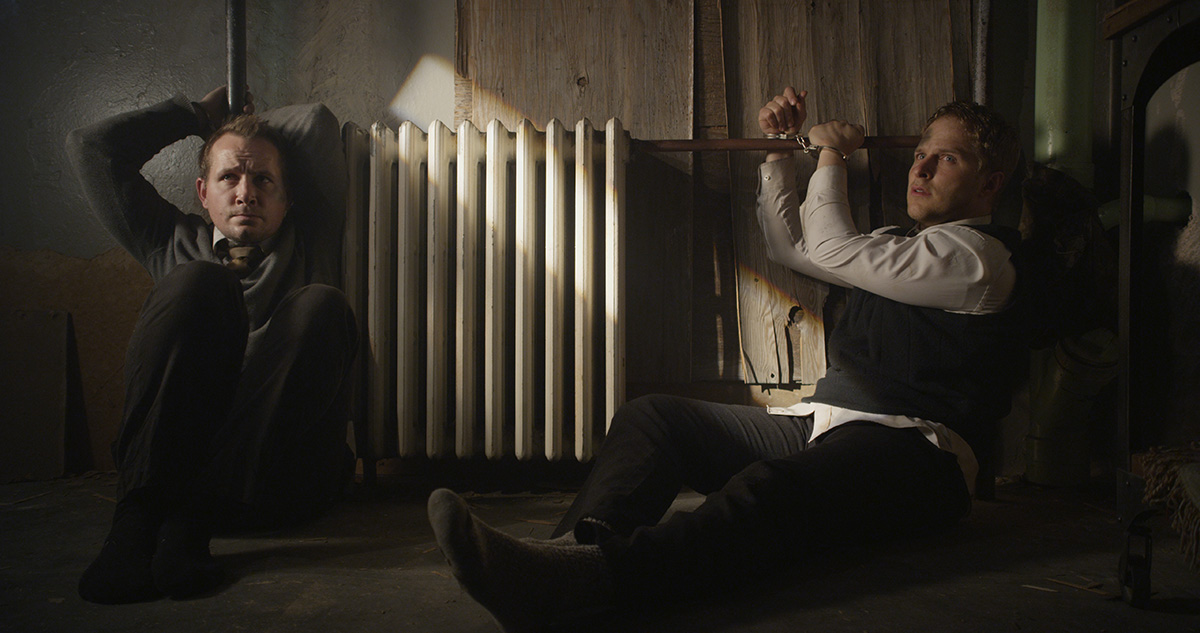
Katherine: It’s surprising.
Garrett: It’s surprising to them and it’s foreign. There’s an executive at CBS who was talking about this and saying, “I don’t get why they did that. I don’t get that. What are you trying to say?” That came up a couple of times.
To me it was very encouraging. They certainly appreciated the film and were very, very complimentary of the film. And yet—I can remember as a missionary sitting down and talking about a testimony or the Atonement, and some people just didn’t get it. And that’s okay.
Katherine: Yeah, that’s neat. It’s planting maybe a new idea. Something to kind of chew on, for people who maybe haven’t had that experience or don’t share that belief. That’s really interesting.
So, Saratov Approach did really well, and it is on Netflix. I have pulled it up on Netflix, even though I saw it in the theater, because it’s really lovely. The ending scene is so powerful. We’ve interviewed Robert Allen Elliott and talked to him about that and that ending.
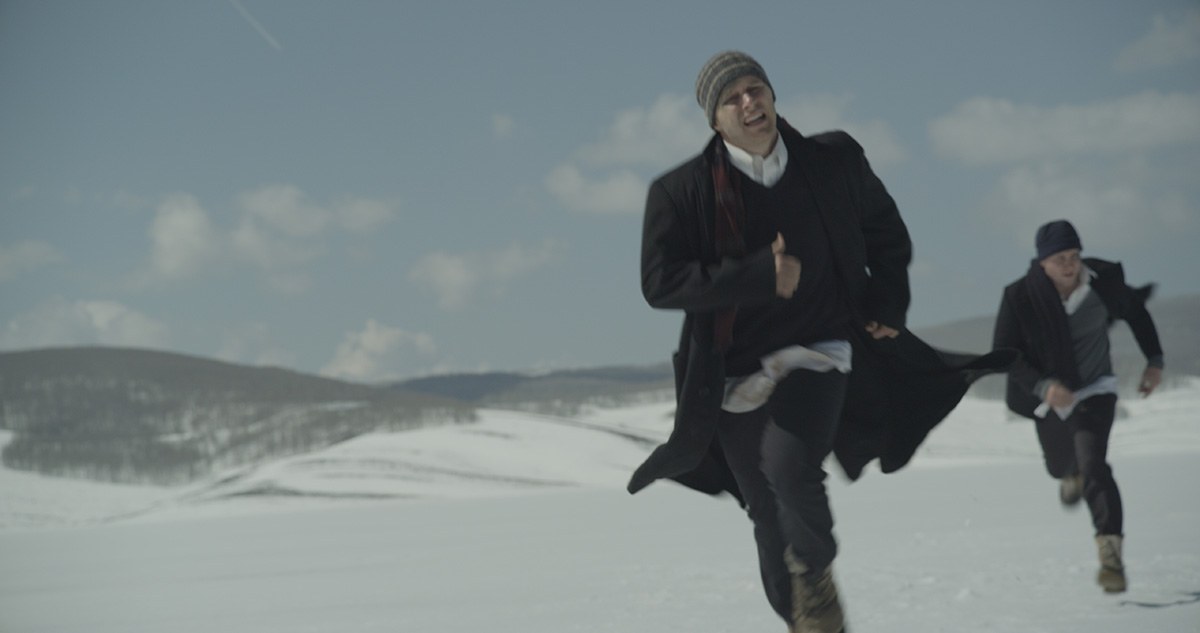
Garrett: Robert is phenomenal.
Katherine: Yeah, that was a slam dunk score. That was gorgeous.
Garrett: Thank you.
Katherine: And the writing was really good too. The relationship between the missionaries and their captors was really fascinating.
Garrett: It’s a fun project. Both Andy Propst and Travis Tuttle, the two missionaries—I thank them everyday for letting me share their story, and for what they did at the time. Had they not acted according to what they felt they should be doing, we certainly wouldn’t have this powerful story to share.
Katherine: Yeah, definitely. There’s a lot more I could say about The Saratov Approach, but let’s go ahead and talk about Freetown, because that’s what you’ve been working on for a while now. How did you come across that story?
Garrett: I guess the short story is that there’s an article on the Church’s website—there’s an old article, kind of tucked away in one of these back pages of the website that was called “The Lord Provides a Way.”
It talked about this experience of these eight missionaries and their driver that fled Liberia during the civil war, and some of the obstacles they had to go through and the faith they had to show in order to get to their destination.
The sources cited in it were what really intrigued me. It was missionary letters—letters to the [mission] president that these missionaries had written. I thought, “Well, that’s interesting. I wonder if there are additional details.” What more could be learned from that story?
So, I pulled those cites and went to the Church’s library—the Church History Library downtown. They have you leave all your computers and recorders and everything. They fingerprint you and you go through background checks and security, and then they let you in. They hand you rolls and rolls of microfilm.
After scanning those for hours, I finally found these missionary letters and accounts of what these guys went through. It was riveting. At that point I said, okay, this is a story that I’d like to tell.

Katherine: How did you come across that original article?
Garrett: Again, I don’t know. Just reading the Church’s website, looking for neat stories. This one was under “Pioneers in Other Lands,” and it just stood out.
Katherine: Were you specifically looking for material for film?
Garrett: Yes. Anything I read.
Katherine: You’ve always got your ear to the ground. That’s neat. That sounds like an adventure.
Garrett: It definitely felt like I’d come upon a buried treasure, because it happened back in 1989, so we’re coming on 30 years ago when it happened.
One of the neat things—this is back in January, when I started researching this (January of 2014). Then in June of 2014, the Church actually published an article on this story in the Ensign. So, it was kind of neat to know about the story and then see what they had written about it. It’s a fascinating article.
Katherine: So, did you think to yourself, “Am I really going to do another Mormon missionary story?”
Garrett: I did, yes. You know, I didn’t want to be that guy. People say, “Okay, we get it—you had a traumatic experience on your mission.” Which, I didn’t. I certainly don’t want to be labeled as the guy who makes “missionary in peril” movies.
We made a conscious effort to say this is a different film altogether. Certainly, there was a response to Saratov Approach where people were saying, “We’d like more of this.” I didn’t want to turn a blind eye to that. That’s something I wanted to respond to. But at the same time, I knew that I couldn’t just make the same movie set in a different country.
Katherine: Yeah. Well, it’s not. One of the interesting things about the film is that there are more characters. There are quite a few characters. In The Saratov Approach, you had those two main characters, but in this one, you have—did you narrow it down to six missionaries? You had six missionaries, plus the branch president, who takes a big role—the one who drives the missionaries to Freetown across Liberia and Sierra Leone.

And in some ways, I think I heard someone—and I was having this same thought—It’s almost a travel film the second half. They’re on the road, driving and driving and encountering different situations, getting back in the car, and then going somewhere.
In that respect, it’s quite different because it’s a different kind of interaction with their surroundings. In The Saratov Approach, they’re stuck in a room for most of the film—the same room. But in this one, they’re outside, they’re interacting with people on the way. So, it does have a different feel, I would say, for sure.
Garrett: Well, that’s good to hear, because that was definitely our goal. Freetown is a much bigger film, as you’ve pointed out—a much bigger task. We needed it to feel like a road trip movie, a movie that has a destination that we’re trying to get to.
Some of the irony to the story between Freetown and Saratov Approach are that our main characters make exactly opposite decisions. If you’d seen The Saratov Approach, what you’d learn is ultimately what these missionaries decide is to sacrifice. Yet, our characters in Freetown, whom we related to, make the exact opposite decision: that they’ll do anything to live.
Katherine: Tell me about filming Freetown. That must have been a really fascinating experience, to be there on location in Africa and use primarily African cast and crew.
Garrett: It was. It was an adventure. Adam Abel, who’s the producer of Freetown, is very experienced in producing war-related films and also independent films. He’s done Saints and Soldiers and Forever Strong.
He and I decided the only way to do this would be to go to Africa and film using an all-African cast and to be as authentic as we could. We determined Ghana would be the place we were going to film this. It was a safe place. It was not dealing with the Ebola crisis at the time. It had the resources we needed in order to get this done.
So, we went and held auditions. We hired a production company down there to put together auditions and hire crew. It was remarkable, the talent that was available both in front of the camera and behind the camera. And then, certainly the locations are unique and were just beautiful and exactly what we needed for the film.
Katherine: They’re gorgeous. So green and lovely.
I’m particularly interested in the branch president, Abubakar. He was really good. I thought that he really stood out in his performance. Where did he come from?
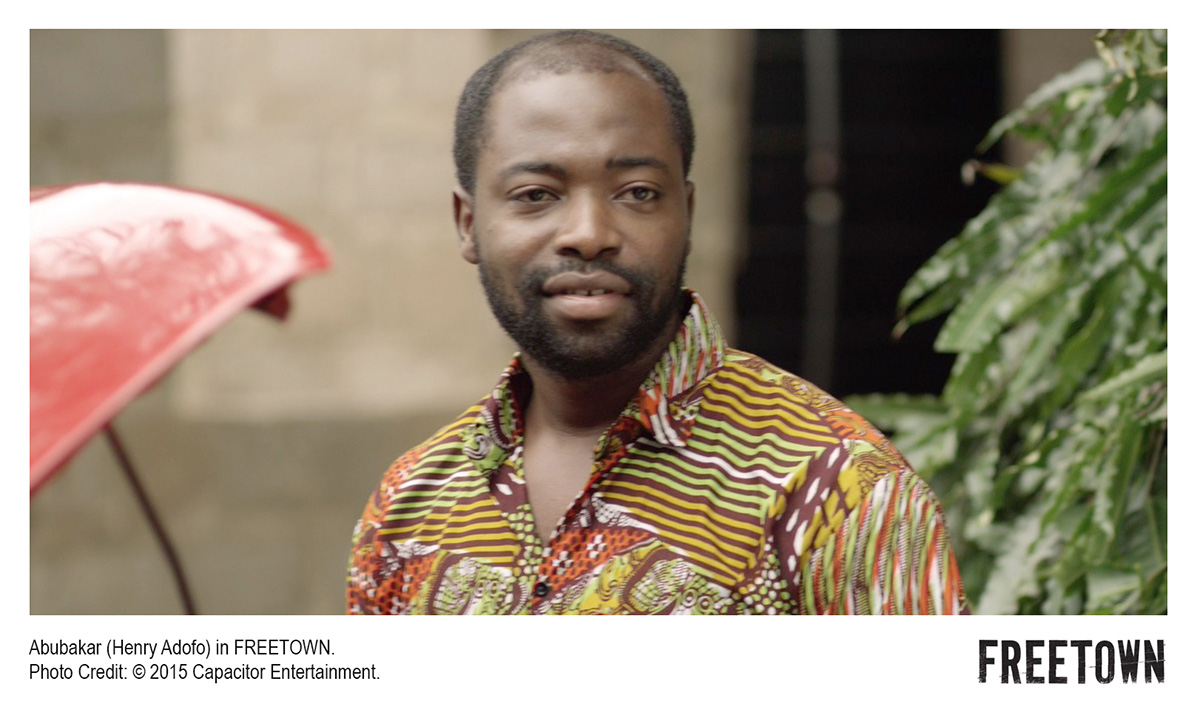
Garrett: So, Phillip Abubakar. Yeah, he’s arguably our protagonist in the movie. He’s an incredibly talented actor. He was on a children’s series several years ago in Ghana. He’s got an interesting story. He’s Italian. He lives in Italy.
He happened to be in Ghana the week of our auditions and auditioned for the film. When we cast him, he decided to stay for several months. He was incredibly talented, along with many others in the film.
Katherine: One of the things I liked about him was he would get frustrated, and it was very relatable and very sincere. There were a couple times he got really frustrated with those missionaries he was taking across the country, even though he cared for them a lot.
He kind of reminded me of Paul Rusesabagina from Hotel Rwanda—that he has the responsibility to care for these people, but it’s also a burden, and you can feel it at times. Just a very relatable characters.
Garrett: I think that Melissa Leilani Larson—she’s our screenwriter—did a phenomenal job of putting that feeling to paper. When I read the script or when I read the stories, he was immediately who I related to.
I think, how many times do we hear “Who wants to feed the missionaries this week?” and one or two hands reluctantly go up. Or “Who can do splits?” or “Who can take care of these missionaries?” I think, that’s a very real feeling. Whether it’s correct or not is maybe to be determined or to be talked about. Certainly Phillip Abubakar represents that feeling in all of us.
Katherine: Yeah. I mean, he was willing to risk his life for them. He’d give his life for those missionaries, but they were also getting on his nerves sometimes.
Garrett: Yeah, good. She did a good job, then, doing that.
Katherine: That was great.
What were some of the scenes in the movie that were particularly memorable to you? And can you tell us a little about filming them? Maybe just one or two?
Garrett: Sure. Yeah. There were a couple scenes. First of all, as you’ve seen in the trailer, the movie is set in the middle of Monrovia, and we’ve got rebels that have essentially descended upon the city and shut it down.
I remember having to shoot that scene—we loaded up a truck full of actors that were all made up to look like rebels, and we gave them these weapons. We had permits to drive this truck through the neighborhood, and we had this rebels chanting and threatening.
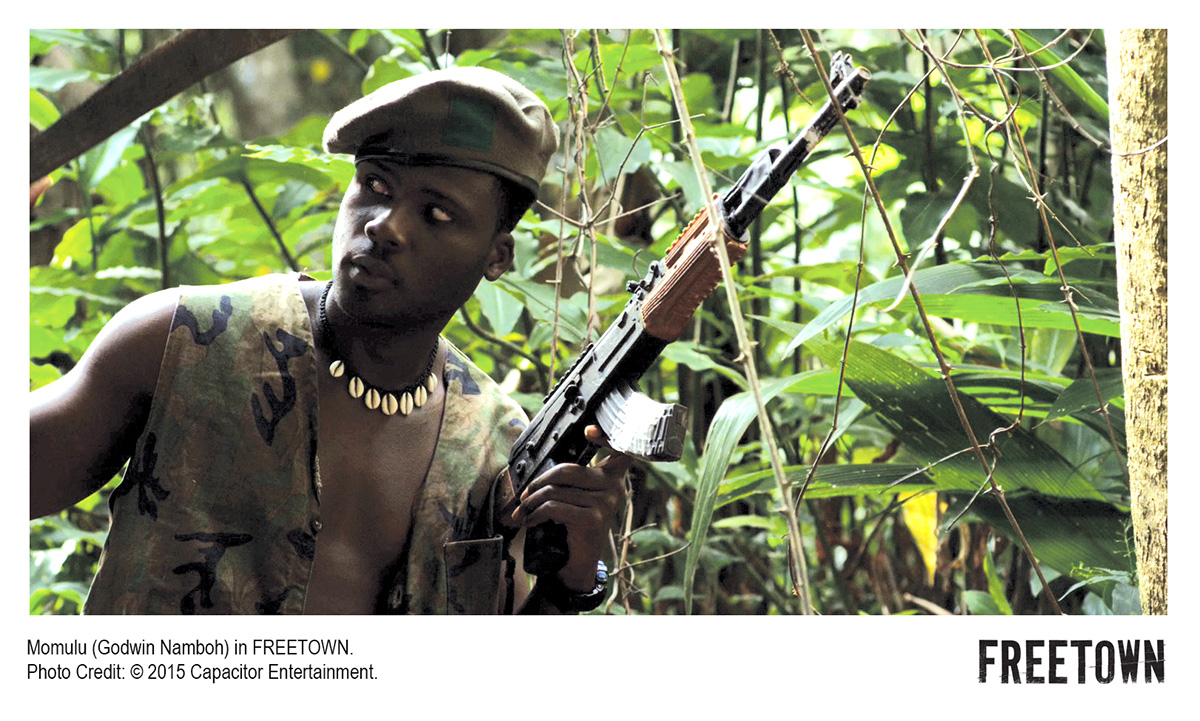
Katherine: Waving their guns.
Garrett: Waving their guns. That was a particularly memorable scene, because certainly I was scared to death to shoot it for all the things that could have gone wrong. And yet, it was amazing to think that it really happened, that we were re-creating an event people could relate to.
We did a script reading for the film right before shooting, with all of our cast. It was particularly powerful at the end of the read-through when several of the cast shared experiences that they had with this Liberian Civil War. Our main rebel in the film is Liberian, and he talked about his experience—his memories of this exact occurrence. That definitely was a powerful moment for me.
On the other side of that, there’s a scene in the film that’s set in a chapel, where a congregation is singing a hymn. The hymn is “Know This, That Every Soul Is Free.”
Katherine: That gave me chills. It was really beautiful.
Garrett: It is beautiful. To hear them sing is an experience. It talks about how God will force no man to heaven, which applies to the theme of the film—certainly what our main character Phillip Abubakar is experiencing.
In that scene in particular, as we filmed it over and over, our actor Henry Adofo, who plays Abubakar—I stopped the scene, we’d gone through a couple of times, I cut the camera, and I looked over at Henry. He’s just sobbing—he had come undone.
He excused himself from the room and went out to the porch area. I went out to talk to him about what he was feeling and going through, and it was one of his moments where he really recognized the significance of this story. He was definitely feeling the Spirit there. It was testifying to him the importance of this story in particular and also of missionary work. It was a unique thing for him, so it was a really special moment.
Katherine: You’ve talked a little bit about the experience of the cast with the story. What has the reception been like so far? I’m particularly interested in knowing what the reception has been like in Ghana, because you have played this film in Ghana.
Garrett: We did. The first part of March, we released the film in Ghana. Adam and I knew that filming —we filmed in Ghana in greater Accra area, and then in several villages on the outskirts of Accra.
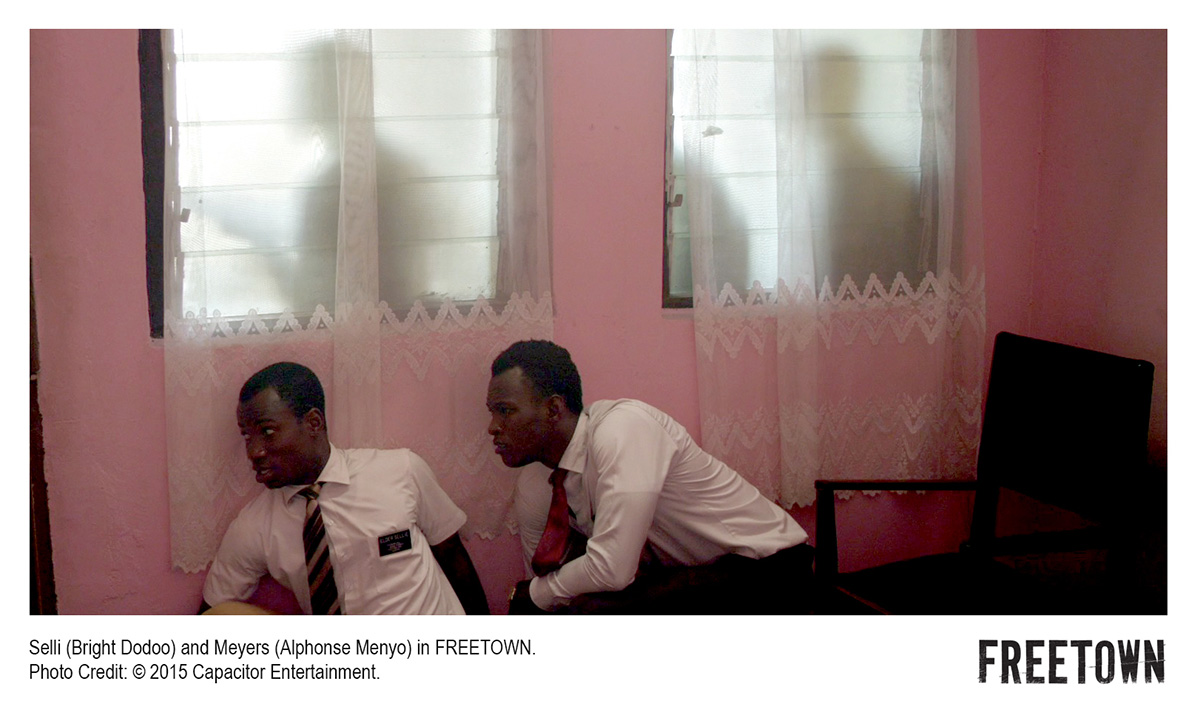
Here we show up with a film crew and cast and lots of people and lots of equipment, and we set up in these villages after meeting with the village chief to ask permission. If the village chief says yes, then everybody in the village needs to comply. So, we were somewhat disruptive to these villages. They were willing, and we were as cordial as a film crew can be. But we knew this was a unique experience for them. Adam and I determined we would bring the film back to them and let them experience it.
So, we did a theatrical release in Ghana in March, where it was very well received. The national news coverage there was unprecedented for an independent film. It was far beyond what we would get here. But then, also, I guess as a thank you to the village, we arranged to have a big screen set up in the middle of the village, knowing that they’d never be able to make it to a movie theater.
We showed the film, we played the film right in the middle of the village where we filmed. And it was fun—it was amazing to see their reaction. Not only here’s this movie and that’s a new experience for many of them, but to see themselves on the screen. The fun weeks we had in their village now came full circle, and they were able to see and point and say, “There’s my house” or “There’s me.” It was a really neat experience.
Katherine: What are viewers in Africa saying about the film?
Garrett: It’s been very positive. We’ve been very fortunate that it is positive. The theatrical audience is responding. It’s a unique film. Certainly, they have Hollywood movies there that they can watch, and also Nigerian films—there’s a very big industry in Nigeria for movies, and they make it over to [other countries in] Africa, and they have certainly a different production quality level.
I think what people are responding to is this has a Hollywood production quality, but it’s their story. It’s a relatable story to them. I think that’s causing them to really respond positively.
Katherine: Their story with African actors.
Garrett: Yeah, there’s nothing about it that’s fake. It’s a real story.
Katherine: So, is it true that you were in the trunk of the car during the filming?
Garrett: Yes. Again, it’s an independent film, so we had to get creative as to how we were going to get a shot.
Typically, when you’re filming a road trip movie, you put the car on a process trailer that has anywhere from 12 to 24 inches of space for you to walk around the car with a camera and film.
That doesn’t exist in Ghana. So, we rigged the camera onto the side of the car. We had different mounting points of where we could put the camera on the outside of the car. And then, because it was moving and I needed to be able to monitor the shots and the audio, and with seven people in the car —the only place for me was in the trunk.
So, everyone got a kick out of that, every day that we used the car.
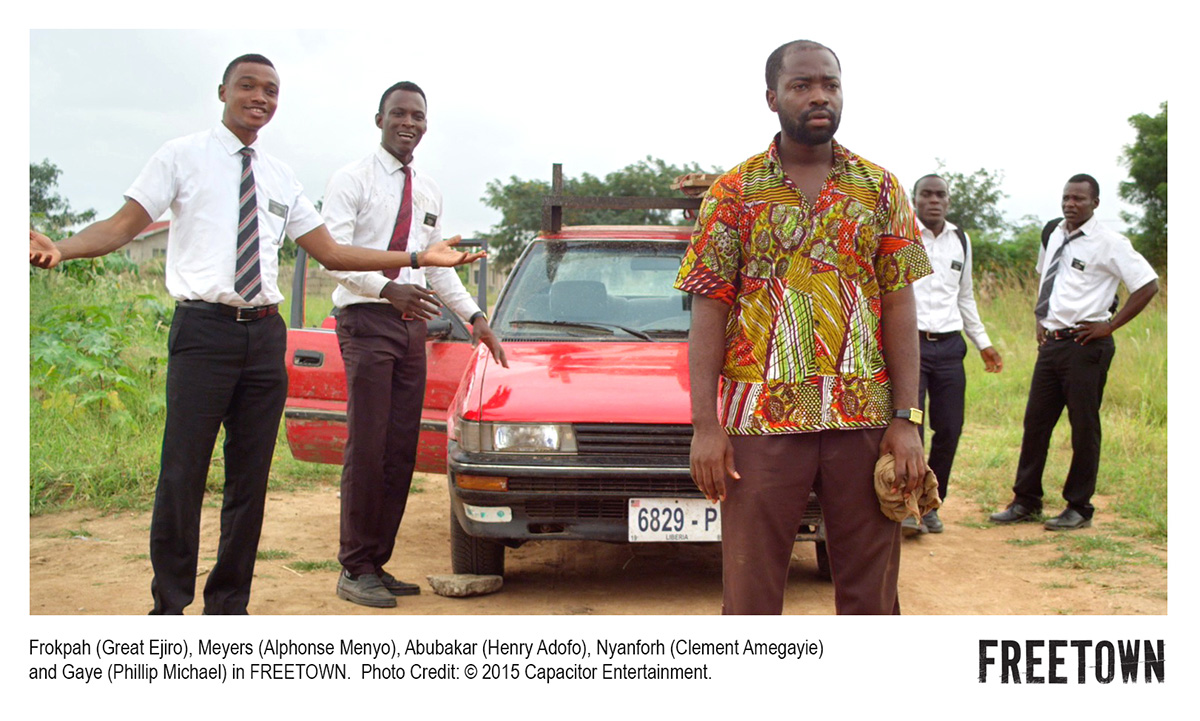
Katherine: Truly sacrificing for your art.
Garrett: Yes. Yes, it was. There were some scary moments in there. Our talented actor who played Phillip wasn’t—he’ll be the first to confess this—he was not a driver at all. And yet he had to drive the car. So, every time that car was moving where he was behind the wheel, it was—we were taking our lives into our own hands.
Katherine: That’s funny. I guess it enhanced the feeling of authenticity for you—risking your lives traveling in this car. You could relate to those missionaries.
Garrett: Yes. I definitely felt each bump in the road, and it was a scary time. Fortunately, it worked out.
Katherine: What would you say that you gained from making that film and that you hope that audiences would gain from watching that film. I don’t know if that’s the same thing.
Garrett: In this circumstance, it probably is the same thing. Making the film—it was a very, very difficult film to shoot. I was surprised at how difficult it was to raise money for the film and then to execute it. Every shot in the film we had to fight for.
It was very difficult because of the location and the timeframe and the budget and everything. Certainly, making a film is a hard thing to do. But both Adam and I felt like for this one the difficulty level was enhanced because of the circumstances in which we were making the film.
And yet, despite whatever went wrong on set during the day, or whatever obstacles we had to overcome, if we just took it one shot or one day at a time, we could get through it. We could endure it. And if we took a step back, we could definitely see the hand of the Lord helping us along the way. That was the only way we were able to get through some of the incredible challenges that came up during the film.
So, as far as what I get out of it—I think it was a very, very refining process in which I came to have a great amount of respect for that process, of just enduring. To quote the theme of the film, to just “keep moving forward.”
To answer the other side of your question, certainly I don’t want the film to be an exercise in endurance for [the audience]. I want them to enjoy the film. But I want them to appreciate or recognize the importance to keep moving forward. You don’t have to be in a vehicle coming across Liberia to feel challenges. There are obstacles that we all experience. But, as these missionaries did—and as any audience member can do—if you step back and recognize the daily miracles that are occurring, then that does strengthen your resolve to keep moving forward.

Katherine: Well, that theme is loud and clear, and I won’t spoil it for people who haven’t seen the movie, but the ending—there’s kind of a turning point in the film. There’s a part where the branch president is looking down at this water, and he’s kind of at the end of his rope, and he prays, and it’s really lovely. I don’t want to spoil it—but there is clarity that comes and he’s given that strength to endure.
Garrett: Yeah, I think often the answer comes in an unexpected way—not necessarily what you were planning on.
Katherine: Yeah, and often when you feel like you have given everything, and your prayer isn’t being answered. It’s very inspiring.
I would encourage all of our listeners to go see it. April 8th is coming up. That’s very exciting.
I don’t know if you’re thinking forward to your next project, but I’d be interested to know if you have something in the works or have some thoughts of what you might be doing next. I’m assuming you’re going to be making another film?
Garrett: Yeah, well, we’ll find out after April 8th.
Certainly, there are other projects in the works. But the focus right now on this one is that opening weekend. It is an absolute joy to make an independent film, and it’s been the dream of mine for a long time. But it can’t happen without—that opening weekend is so imperative, because to get a film in the theaters, you’re taking the place of some other screen that might be reserved for a Hollywood movie.
If theater bookers don’t see an audience response on the opening weekend, you’re out the next week. That’s why it seems like a broken record, but any independent filmmaker is going to say, “You have to go opening weekend.” So, that’s been our mantra.
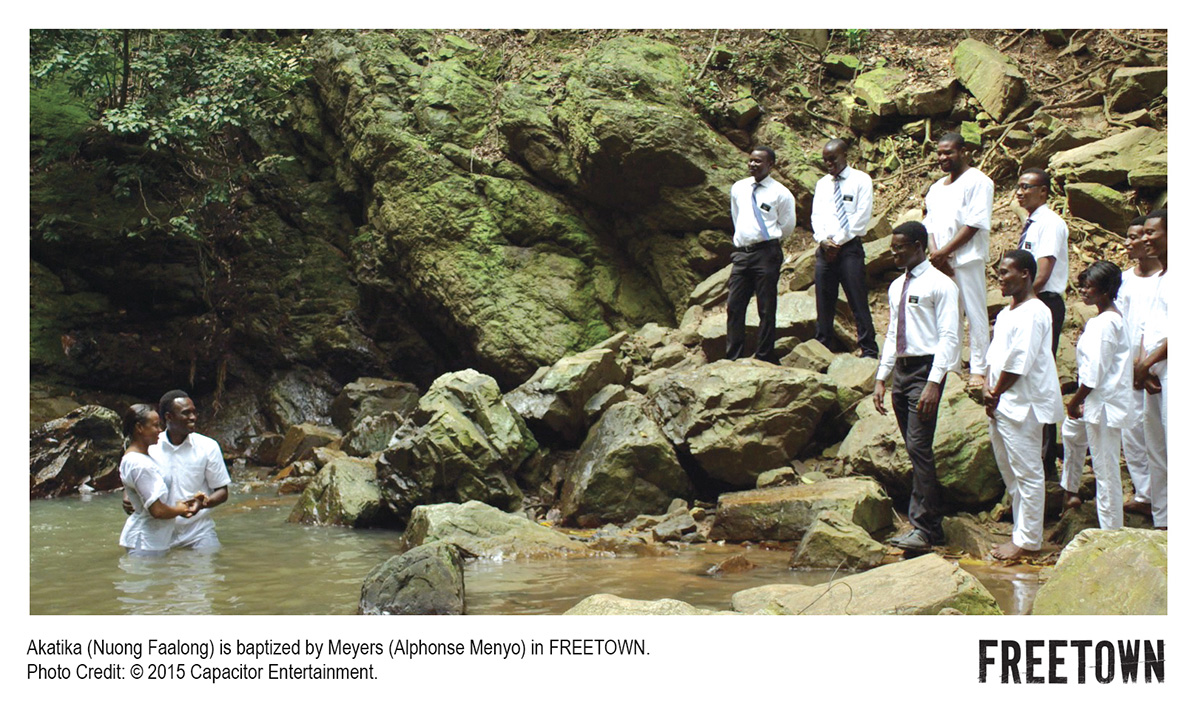
Katherine: Okay, so get through opening weekend, and then you can start thinking maybe about other projects.
Garrett: That’s right.
Katherine: Are some of the stories that you’re thinking about stories with Mormon characters? Some of the stories that you might tell in the future?
Garrett: Certainly. Not all of them. And I don’t know if I’m going to be doing a “missionary in peril” movie for a while.
Katherine: You’re not going to be doing a trilogy?
Garrett: Who knows?
Katherine: You could do the first senior missionary film.
Garrett: Tthere are some incredible stories that I hope that others might be inspired to tell. And because there is an audience for it—and it says a lot to go to the theater and have your faith reaffirmed. That’s a neat experience.
But, no. I’m looking to do another action thriller that’s set in Russia about a spy that—it’s funny; it’s about a spy that has to flee the country, so it’s kind of a combination of Saratov and Freetown, set in Russia.
Katherine: Who’s not a Mormon missionary.
Garrett: He’s not a Mormon missionary.
Katherine: And he’s not LDS. He’s not Mormon.
Garrett: Not in the film.
Katherine: But you do have some characters who are Mormon who you might use in the future.
Garrett: Yes, some.
Katherine: So, my last question is—because it’s Mormon Artist and we like to talk about Mormon art—how do you feel about Mormon cinema? What would you like to see in the future? What would you like to see happen? What’s the potential? Any way you want to answer all those questions I just asked. What are your thoughts about Mormon cinema and where it’s going?
Garrett: I’m super encouraged by where it’s going. The idea of this type of film—films with a unique Mormon voice—has always interested me. Anytime anyone said, “Mormon film is dead” or “LDS film is dead,” I always spoke up and said, “No, it’s not. It’s not.” If we tell good stories, the audience will respond. That’s what people want.
I think watching a movie is just like eating a piece of chocolate cake. Sometimes it’s going to be a wonderful experience, and sometimes it’s going to be dry. But you’re never going to stop eating chocolate cake.
So, we have to provide an experience for an audience that competes with the other offerings that are out there. That doesn’t mean being exclusive. It means learning a craft, learning how to speak the language of film, and then inserting our message into that language or sharing the story that we want to share using that language. I’m encouraged that we have the opportunity to do that.
Katherine: Okay, any last remarks? Go see Freetown.
Garrett: Go see Freetown. April 8th. It’s the Wednesday right after Conference. And we’re going to be in the theaters hoping to see all of you.
Katherine: Well, thank you so much for taking the time to do this interview.
Garrett: Thank you very much, Katherine.
Katherine: I enjoyed Freetown, and I’m going to see it on opening weekend, even though I already saw it at the LDS Film Festival. It’s definitely worth seeing again and supporting. And I look forward to seeing your future offerings.
Garrett: Thank you. ❧
